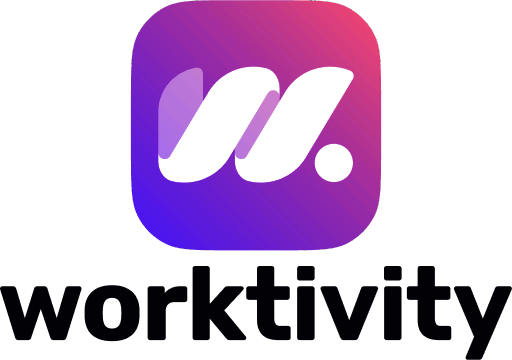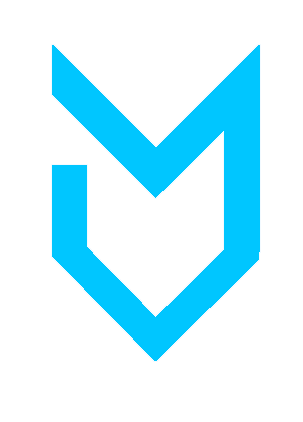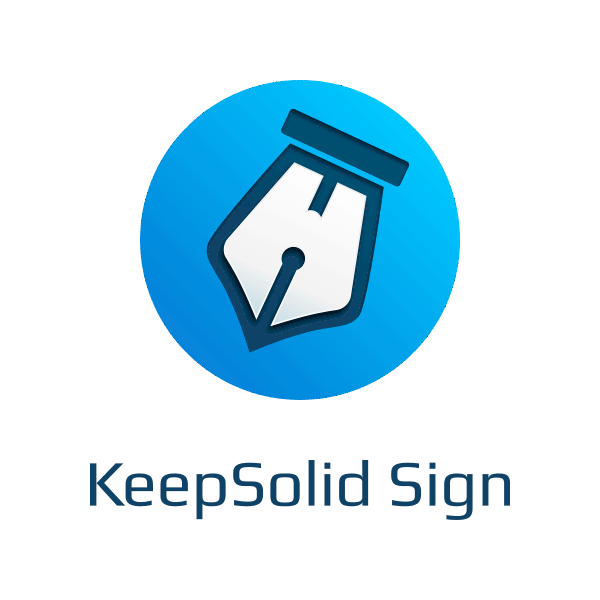Description

TPM Pro

Worktivity
Comprehensive Overview: TPM Pro vs Worktivity
TPM Pro and Worktivity are both software solutions designed to enhance productivity, but they serve different areas within the scope of business operations and target different market segments. Here’s a comprehensive overview of both:
a) Primary Functions and Target Markets
TPM Pro
Primary Functions:
- TPM Pro is primarily a Total Productive Maintenance (TPM) software. It is designed to assist manufacturing facilities in minimizing downtime, increasing efficiency, and maintaining optimal production levels.
- Offers features for scheduling maintenance tasks, tracking equipment performance, and managing spare parts inventory.
- Provides analytics and reporting tools to help management make informed decisions regarding equipment usage and maintenance schedules.
Target Markets:
- Manufacturing industries, including automotive, electronics, and consumer goods.
- Facilities managers and operations directors who are focused on implementing lean manufacturing principles.
- Maintenance and operations teams looking for comprehensive solutions to manage preventive and predictive maintenance efficiently.
Worktivity
Primary Functions:
- Worktivity is a workforce management software aimed at optimizing employee productivity and engagement.
- Includes features such as task assignment, time tracking, productivity analysis, and employee collaboration tools.
- Facilitates remote work management and helps monitor overall team performance with integrated communication tools.
Target Markets:
- Small to medium-sized businesses across various sectors like IT, consultancy, and digital marketing.
- HR departments and team leaders who need robust tools for managing remote or hybrid workforces.
- Companies looking to enhance employee engagement and streamline workflows.
b) Market Share and User Base
TPM Pro:
- TPM Pro tends to have a high market share within the manufacturing sector due to its specialized nature and comprehensive feature set for maintenance management.
- Its user base mainly comprises large to mid-sized manufacturers focused on sustaining high levels of equipment reliability and productivity.
Worktivity:
- Worktivity enjoys a broader user base across different industries given the widespread need for effective employee management tools in today’s hybrid and remote work environments.
- Its market share is growing as more companies invest in digital tools to manage their workforce effectively.
c) Key Differentiating Factors
TPM Pro:
- Deep specialization in equipment maintenance and reliability, with tools crafted specifically for industries reliant on physical assets.
- Extensive reporting and data analytics capabilities tailored for improving operational efficiencies and reducing downtime.
- Industry-specific integrations with manufacturing execution systems (MES) and enterprise resource planning (ERP) systems.
Worktivity:
- Offers flexibility and scalability to fit different organizational needs irrespective of industry.
- Focuses on employee productivity and engagement, offering features that facilitate remote work and enhance team communication.
- Integration with various collaboration and communication tools (e.g., Slack, Microsoft Teams) to support modern work environments.
In summary, while TPM Pro is tailored for manufacturing sectors with a focus on asset maintenance and reliability, Worktivity is versatile in application and targets businesses looking to enhance workforce management and productivity. Each product has carved out its niche based on industry needs, with TPM Pro leading in maintenance-heavy industries and Worktivity appealing to a broader market focused on human resource optimization.
Contact Info

Year founded :
Not Available
Not Available
Not Available
Argentina
Not Available

Year founded :
Not Available
Not Available
Not Available
Not Available
Not Available
Feature Similarity Breakdown: TPM Pro, Worktivity
To provide a feature similarity breakdown for TPM Pro and Worktivity, let’s analyze their core features, user interfaces, and unique aspects.
a) Core Features in Common:
-
Task Management: Both TPM Pro and Worktivity offer robust task management capabilities, allowing users to create, assign, and track tasks with different statuses and priorities.
-
Collaboration Tools: These platforms facilitate team communication with chat functions, comments on tasks, and shared workspaces to ensure seamless collaboration among users.
-
Time Tracking: Both tools include time tracking features, helping teams log work hours for tasks and projects, thereby aiding in productivity analysis and reporting.
-
Project Planning: The ability to plan and organize projects using timelines or Gantt charts is available in both tools, supporting scheduling and visualization of project progression.
-
Reporting and Analytics: Each product offers reporting features, providing insights into project timelines, resource allocation, and team productivity, helping stakeholders make informed decisions.
b) User Interface Comparison:
-
TPM Pro: It is known for its professional and feature-rich interface, designed to cater to complex project management needs. The layout typically emphasizes comprehensive project views, detailed task panels, and customizable dashboards.
-
Worktivity: Worktivity often aims at simplicity and user-friendliness, with a more streamlined interface. It emphasizes ease of use with intuitive navigation, appealing to users seeking a straightforward approach to task and time management.
c) Unique Features:
-
TPM Pro:
- Advanced Integration Capabilities: TPM Pro typically offers extensive integration options with enterprise software like ERP systems, CRM platforms, and other business-critical tools, enabling smoother data flow across organizational processes.
- Enterprise-Level Security Features: It might have more advanced security settings, suitable for larger organizations with specific compliance and data protection needs.
-
Worktivity:
- Gamification Elements: Worktivity often incorporates gamification elements, like badges or leaderboards, to enhance user engagement and motivation.
- Simplicity in Onboarding and Use: It frequently emphasizes ease of onboarding and training, making it attractive to smaller teams or startups that require quick deployment without complex setup.
By examining these aspects, decision-makers can better understand the relative strengths of TPM Pro and Worktivity and choose the product that aligns most closely with their organizational needs.
Features

Collaboration Tools
Resource Management
Reporting and Analytics
Project Management
User Access and Security

Project Management
Time Management
Reporting and Analytics
Team Collaboration
Best Fit Use Cases: TPM Pro, Worktivity
TPM Pro and Worktivity are tools designed to enhance business efficiency, but they cater to different needs and scenarios. Here is a description of the best fit use cases for each:
TPM Pro
TPM Pro is typically suited for:
a) Types of Businesses or Projects:
-
Manufacturing Companies: TPM Pro is a natural fit for manufacturing environments that need to maintain high levels of equipment reliability and productivity. Its focus on Total Productive Maintenance (TPM) principles makes it invaluable for reducing downtime and optimizing asset performance.
-
Industrial and Engineering Projects: Projects that involve heavy machinery or intricate engineering processes can benefit significantly from TPM Pro's analytical and maintenance planning capabilities.
-
Asset-Intensive Industries: Industries like oil & gas, utilities, and transportation, where equipment maintenance is crucial, will find TPM Pro beneficial for its robust maintenance management and tracking features.
b) Ideal Scenarios:
- Preventative Maintenance Planning: Scenarios requiring detailed scheduling and prioritization of maintenance tasks to prevent unplanned downtimes.
- Equipment Performance Optimization: Situations where businesses need to closely monitor machinery and equipment to enhance productivity and extend their lifespan.
- Lean Manufacturing Initiatives: When a company is looking to reduce waste and optimize processes, TPM Pro provides valuable insights and tools to support these goals.
Worktivity
Worktivity, on the other hand, is more aligned towards:
a) Types of Businesses or Projects:
-
Service-Oriented Companies: Businesses in sectors such as consulting, marketing, and IT that rely heavily on workforce coordination and task management.
-
Project-Based Organizations: Firms managing various concurrent projects, needing robust tools for scheduling, resource allocation, and collaboration.
-
Flexible or Remote Work Environments: Companies promoting remote work can utilize Worktivity to maintain coordination, monitor progress, and ensure communication.
b) Ideal Scenarios:
- Task and Workflow Management: Situations that require streamlined assignments, tracking task progress, and managing team workflows are perfect for Worktivity.
- Collaboration and Communication: Scenarios with a high demand for team collaboration and communication, especially in remote settings.
- Agile Project Management: Ideal for businesses that employ agile methodologies, focusing on sprints, backlogs, and regular iterations.
d) Catering to Different Industry Verticals or Company Sizes
-
Industry Verticals:
- TPM Pro effectively addresses industries where machinery and equipment maintenance is pivotal, such as manufacturing, utilities, and transportation.
- Worktivity caters more to dynamic environments like tech, marketing, education, and consulting, focusing on workforce and task management.
-
Company Sizes:
- Large Enterprises: Both tools can scale to meet the demands of large enterprises, with TPM Pro supporting extensive asset portfolios and Worktivity managing complex project workflows.
- Small to Medium Businesses (SMBs): Worktivity is particularly adaptable to SMBs looking for cost-effective, scalable solutions to manage teams and projects without significant overhead.
- Startups: Startups may prefer Worktivity for its flexibility in managing evolving projects and fostering innovation through effective collaboration.
Overall, choosing between TPM Pro and Worktivity should be based on the specific operational needs, industry characteristics, and the scale at which a business operates.
Pricing

Pricing Not Available

Pricing Not Available
Metrics History
Metrics History
Comparing undefined across companies
Conclusion & Final Verdict: TPM Pro vs Worktivity
Certainly! Here's a structured conclusion and final verdict for TPM Pro and Worktivity:
Conclusion and Final Verdict
a) Best Overall Value
Considering all factors such as pricing, features, user-friendliness, customer support, and potential return on investment, Worktivity generally offers the best overall value. Its comprehensive feature set paired with a competitive pricing structure makes it an excellent choice for a wide range of users, particularly small to medium-sized businesses seeking efficient project management solutions.
b) Pros and Cons
TPM Pro:
Pros:
- Advanced Feature Set: Offers robust tools ideal for complex project management needs.
- Customization: Highly customizable, allowing organizations to tailor the platform to their unique workflows.
- Integration Capabilities: Strong integration with other enterprise-level software and tools.
- Scalability: Suitable for large enterprises with extensive project portfolios.
Cons:
- Complexity: Its extensive features might be overwhelming for smaller teams or less tech-savvy users.
- Cost: Higher pricing may not be affordable for small businesses or startups.
- Learning Curve: Steep learning curve for new users, necessitating comprehensive training.
Worktivity:
Pros:
- User-Friendly Interface: Designed with ease of use in mind, requiring minimal training.
- Affordable Pricing: Competitive pricing, making it accessible to small and medium-sized businesses.
- Collaborative Features: Strong emphasis on team collaboration with integrated communication tools.
- Versatility: Offers flexibility to cater to various industries and team structures.
Cons:
- Limited Advanced Features: May lack some advanced tools required by large enterprises.
- Integration Limitations: Fewer integration options compared to TPM Pro.
- Scalability Concerns: Might not scale as easily for very large organizations with complex needs.
c) Recommendations for Users
-
Assess Your Needs:
- If your organization requires extensive customization, advanced project tracking, and can accommodate higher costs, TPM Pro is more suitable.
- If you are a smaller team or a mid-size enterprise looking for a user-friendly, cost-effective solution with essential project management capabilities, Worktivity would be the recommended choice.
-
Consider Future Growth:
- Organizations anticipating rapid growth might weigh the scalability capabilities of TPM Pro.
- Those planning to maintain a steady team size may find Worktivity's features adequate for future needs.
-
Budgetary Constraints:
- Align your choice with the budgetary constraints of your organization. Worktivity is generally more budget-friendly.
-
Trial and Feedback:
- Leverage free trials or demos offered by both tools to gauge user feedback and ensure that the chosen solution aligns with team workflows and expectations.
In summary, while both TPM Pro and Worktivity have distinct advantages and potential drawbacks, the choice ultimately depends on the specific needs, size, and growth trajectory of your organization.
Add to compare
Add similar companies



